About Wilpattu National Park
Wilpattu National Park (Willu-pattu, “Land of Lakes”) is a Sri Lankan national park. The presence of “Willus” (natural lakes) – natural, sand-rimmed water basins or depressions that fill with rainwater – distinguishes this park.
The park is located on the northwest coast lowland dry zone of Sri Lanka, 30 kilometers (19 miles) west of Anuradhapura and 26 kilometers (16 miles) north of Puttalam (approximately 180 kilometers (110 miles) north of Colombo).
The park covers an area of 1,317 km2 (508 sq mi) (131,693 hectares) and has elevations ranging from 0–152 m (0–499 ft) above sea level.
Wilpattu is home to nearly a hundred and sixty lakes (Willu) and tanks. Wilpattu is Sri Lanka’s largest and one of its oldest national parks.
Wilpattu is famous around the world for its leopard (Panthera pardus kotiya) population. The Wilderness and Wildlife Conservation Trust conducted a remote camera survey in Wilpattu from July to October 2015, capturing photographs of 49 individual leopards in the surveyed area, the core area density of which was between that of Yala National Park’s Block 1 and that of Horton Plains National Park.
The park was closed from December 1988 to March 16, 2003, due to security concerns related to the Sri Lankan Civil War, before reopening to visitors sixteen years later. Currently, visitor access is restricted to approximately 25% of the park, the remainder of which is dense forest or scrub.
The months of February and October are the most popular for visitors, though there are a number of private ecotourism groups that offer safaris all year.
Wilpattu National Park is Sri Lanka’s largest and one of its oldest national parks. The park covers an area of 1,317 km2 (508 sq mi) (131,693 hectares). Visitors are limited to 25% of the park, the remainder is dense forest or scrub.

History & Climate of Wilpattu National Park
According to the Mahavansa, in 543 BC, Prince Vijaya landed at Tambapanni, now known as Kudrimalai Point (Horse Point), and established the Sinhala kingdom and nation. The area was designated a sanctuary in 1905, and it was upgraded to National Park status in 1938.
In 47 AD, the subject of Emperor Claudius was blown off course by the monsoon, and visited Kudrimalai, or Horse Point. During Pliny’s reign, the local king sent his own envoys to Rome.
The annual precipitation is approximately 1,000 mm (39 in), and the annual temperature is approximately 27.2 °C (81.0 °F). The main sources of rainfall are the inter-monsoonal rains in March and the northeast monsoon (December – February).
The main sources of rainfall are the inter-monsoonal rains in March and the northeast monsoon (December – February). The annual precipitation is approximately 1,000 mm (39 in), and the annual temperature is approximately 27.2 °C (81.0 °F).
Flora and Fauna of Wilpattu National Park
Wilpattu has a diverse range of vegetation, including littoral vegetation like salt grass and low scrub monsoon forest with tall emergents like palu (Manilkara hexandra) and satin (Chloroxylon swietenia), milla (Vitex altissima), weera (Drypetes sepiaria), ebony (Diospyros ebenum), and wewarna (Alseodaphne semecapriflolia).
Wilpattu National Park is home to 31 different mammal species. The elephant (Elephas maximus maximus), sloth bear (Melursus ursinus inornatus), leopard (Panthera pardus kotiya), and water buffalo are all threatened species that live in Wilpattu National Park (Bubalus bubalis). Wilpattu’s residents include sambhur (Rusa unicolor unicolor), spotted deer (Axis axis ceylonensis), mongoose, mouse, and shrew.
Wilpattu National Park is home to 31 different mammal species. The elephant (Elephas maximus maximus), sloth bear (Melursus ursinus inornatus), leopard (Panthera pardus kotiya) and water buffalo are all threatened species.
Birds in Wilpattu National Park
Wilpattu National Park is home to the painted stork, the open bill, the little cormorant, the Sri Lankan junglefowl (Gallus lafayetii), and numerous species of owls, terns, gulls, eagles, kites, and buzzards. Garganey (Anas querquedula), pintail (Anas acuta), whistling teal (Dendrocygna javanica), spoonbill (Platalea leucorodia), black-headed ibis (Threskiornis malanocephalus), large white egret (Egretta alba modesta), cattle egret (Bubulcus ibis), and purple heron are among (Ardea purpurea) them.
Reptiles in Wilpattu National Park
The monitor lizard (Varanus bengalensis), mugger crocodile (Crocodylus palustris), common cobra (Naja naja), rat snake (Ptyas mucosus), Indian python (Python molurus), pond turtle (Melanonchelys trijuga), and soft shelled turtle (Lissemys punctata) are the most common reptiles found in Wilpattu National Park.
Wilpattu National Park is home to the painted stork, the open bill, the little cormorant, and numerous species of owls, terns, gulls, eagles, kites, and buzzards. The monitor lizard (Varanus bengalensis) and mugger crocodile (Crocodylus palustris) are among the most common reptiles found.
Expansion of the Boundary
The Wilpattu National Park originally surrounded the Puttalam District to the south and the Anuradhapura District to the east. On October 10, 2012, the government issued several gazettes (section 3 of the Forest Conservation Ordinance, Chapter 451) that effectively extended the park’s boundary to include Northern Province regions.

Deforestation
Following the end of the civil war, allegations were made that certain politicians had occupied parts of the reserve to build houses in an attempt to establish Muslim colonies in Wilpattu.
According to Commerce and Trade Minister Rishad Bathiudeen, the people who had been forcibly driven away by the LTTE in 1990 as part of their ethnic cleansing policy had returned to their original villages.
Furthermore, following the ethnic cleansing, the park was expanded to its current size in 1999, with the old villages marked as part of the park, as claimed by the people in this area. Aerial images taken recently show that a significant portion of the forest has been opened up, as well as a large number of small houses being built in the area.
Minister Rishad Bathiudeen’s guidance and orders have now resulted in successful deforestation.
The Wilpattu National Park was opened after the end of the civil war in Sri Lanka. The park’s boundaries were extended to include parts of the Northern Province. Aerial images show that a significant portion of the forest has been opened up, as well as a large number of houses being built.
Conclusion
In conclusion, Wilpattu National Park in Sri Lanka is a stunning destination that offers visitors a chance to experience the island’s natural beauty and wildlife in a unique and unforgettable way. With its diverse landscapes, rare wildlife, and ancient ruins, this park is a must-visit destination for nature and history enthusiasts alike.
At Ceylon Wild Tours, we are dedicated to helping visitors experience the very best of Sri Lanka’s natural beauty and wildlife, and Wilpattu National Park is certainly no exception. Our expert guides are passionate about sharing their knowledge and expertise, and ensuring that every visitor has a truly unforgettable experience.
Whether you’re interested in exploring the park’s ancient ruins, embarking on a thrilling safari adventure, or simply taking in the stunning natural beauty of the area, Wilpattu National Park has something to offer everyone.
So why not plan your visit to Wilpattu National Park today and discover the wonders of this breathtaking destination? With Ceylon Wild Tours, you can rest assured that you’ll have a trip of a lifetime, filled with unforgettable memories and experiences that will last a lifetime.

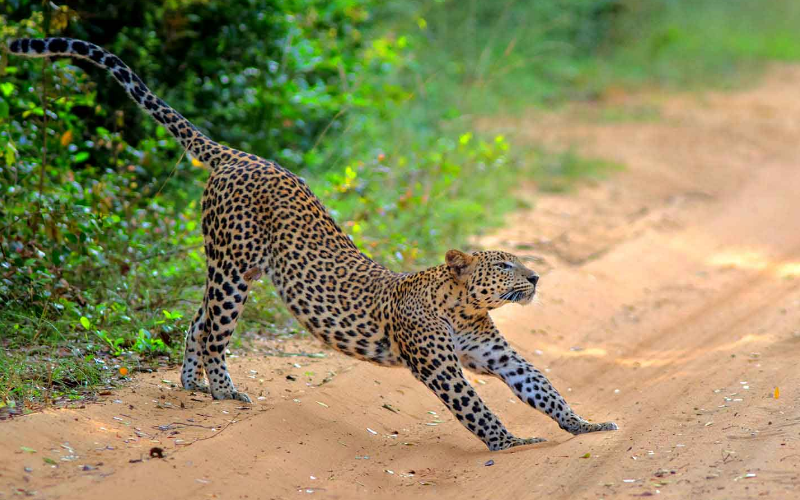




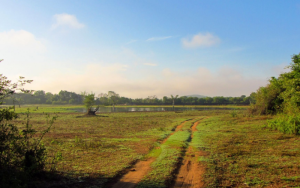
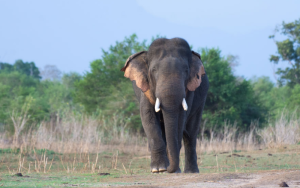
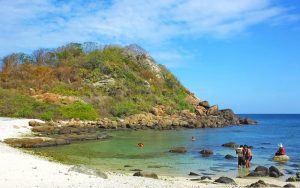
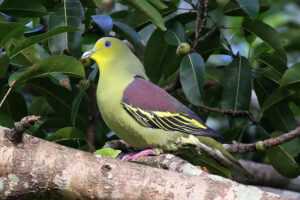


8 thoughts on “Wilpattu National Park: Sri Lanka’s Largest Nature Reserve”
What i do not understood is in fact how you are no longer actually a lot more neatly-appreciated than you might be right now. You are very intelligent. You realize thus considerably on the subject of this subject, produced me individually believe it from a lot of numerous angles. Its like women and men are not interested except it is something to do with Lady gaga! Your individual stuffs nice. At all times care for it up!
Hello there, I found your website via Google while searching for a related topic, your web site came up, it looks good. I have bookmarked it in my google bookmarks.
Hello There. I discovered your blog using msn. This is a really neatly written article. I?ll make sure to bookmark it and come back to learn more of your helpful information. Thanks for the post. I?ll certainly comeback.
Appreciate this post. Let me try it out.
4